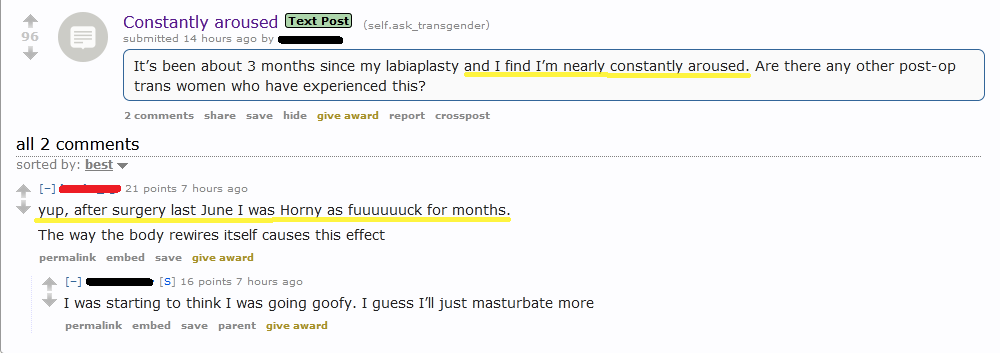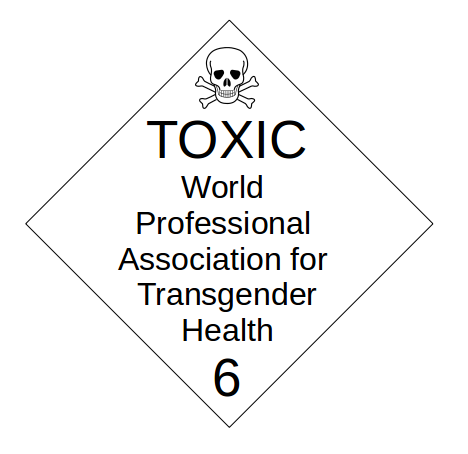In Case of Breastfeeding 'Transwomen', Scientists Ignore Risks to Children
Researchers don't dare put "man milk" under the microscope for fear of "transphobia."

Trans-identified men who feed infants with artificially induced breast fluid coming out of their nipples, have recently caused outrage in the gender critical world.
Actress Courteney Cox was at the source of one such controversy. As part of a series featuring interesting pregnancy-related stories, in June 2021, the Friends ex-star directed her crew’s cameras on a US-based transgender couple.
In the story, female Ahanu Tapepechul and male Petrona Xemiyulu Tapepechul have a baby. First, we witness Ahanu giving birth. Later in the video, Petrona Xemiyulu tries to breastfeed the newborn.
During the attempt at breastfeeding, the female of the two – Ahanu, a “non-binary person” with male-pattern facial hair and bare post-double mastectomy chest, lovingly observes her trans-identified husband, Petrona, having the baby latch onto his nipple.
Unsurprisingly, many online viewers expressed concerns over the infant’s well-being. Some commentators were worried the baby would end up malnourished. Others saw the breastfeeding scene as child sexual abuse. Despite the outrage, zero criticism of these practices appeared in liberal English-speaking media.
Judging by the growing number of men (“trans women”) reportedly seeking help inducing lactation, we will see more “breastfeeding trans women” in the future. How could this practice affect children?
Composition of men's breast fluid
Many lay people in online forums and on Twitter have expressed certainty that male (“trans women’s”), chemically induced breast fluid can’t satisfy children’s nutritional needs.
What do experts have to say on this topic? Scarcely anything. Most “human milk” studies, despite using gender neutral language, focus on women’s lactation.
In fact, browsing through the myriads of scholarly articles on breastfeeding, I have found only one that studied the composition of male (incl. “trans women’s”) breast fluid, conducted in 1981.
The study subject was a 27-year-old man with inappropriate lactation (galactorrhea) caused by an enlarged pituitary gland – a “master endocrine gland” located in the brain that controls all other glands releasing hormones.
Comparing this man’s breast discharge with mothers’ milk, the researchers found out it was similar in nutritional value:
“The concentrations of lactose, proteins, and electrolytes in the breast secretion of this man are within the range of colostrum and milk obtained from normal lactating women.”
As more research into male “milk” composition is lacking, other clues about the impact of such lactation must be gained elsewhere. For example, recent studies have compared women’s breast tissue with the one developed in males who use wrong-sex hormones. According to a 2019 article in International Journal of Environmental Research and Public Health,
“The breast tissue that develops, using the standard estrogen hormone, is [...] indistinguishable from that of any cisgender [sic] woman. Tissue changes derived from a therapy with high estrogen levels during the transition, unlike what happens in gynecomastia, leads to the development of galactophores ducts, lobes, and alveoli. This way, the glandular volume increases, which also turn out to be identical to that of cisgender [sic] women.”
In simpler terms, according to this study, men on cross-sex hormones develop breast tissue that could function the way women’s breast tissue does.
Male breastfeeding may, therefore, be possible. But is it advisable?
Even the director of Transgender Care at University of California, San Francisco Madeline Deutsch states that the practice of male breastfeeding “cannot yet be recommended.” The trans-identified man adds he “can see the potential benefits of [male] breastfeeding, but […] the long-term impact of this milk on the baby – including on subtle measures like IQ – is unknown.”
Knowing is transphobic
If breastfeeding men are on the rise, why aren’t more researchers looking into male breast fluid composition and its short-term as well as long-term impact on children?
One reason for the dearth of scientific inquiry could be that any scrutiny of trans-identified men’s breast fluid would suggest it is different from women’s milk. In turn, this would imply that “trans women” are not actually women. Of course, going ahead and saying that breastfeeding “trans women” are the same as breasfeeding men, is absolutely out of the question.
Endocrinologist Tamar Reisman said this to The Guardian about equating trans women with men in terms of breastfeeding: “That, implicitly, is saying that you see transgender women as cisgender men, which is transphobic.”
Discouraging anyone from specifically focusing on “trans women’s” breast fluid, Martha Jane Paynter, MDE, MSc, RN, in her 2019 Journal of Human Lactation article, argued it is “important not to pathologize unnecessarily or misuse clinical interest in milk quality to justify transphobia.”
Further on, she states:
“Deconstructing aversion to impurities in human milk may facilitate healthcare providers, peer supporters and friends and family networks to be more inclusive of transgender parents in our breastfeeding and chestfeeding support practices, and may make a small contribution to improving breastfeeding rates.”
Differently put, now that men wish to breastfeed, “aversion to milk impurities” should be deconstructed. However, when women’s milk is considered, researchers pay attention even to the impact of date fruit on its qualities.
Kids: who cares?
The disturbing fact that researchers avoid focusing on infants’ nutritional needs to prioritize keeping male fantasy worlds intact, is attested by another research article.
In a “groundbreaking” 2018 study, a “trans woman” came to a “clinic seeking help to achieve her [sic] goal of breastfeeding.” The physicians “implemented a regimen of domperidone, estradiol, progesterone, and breast pumping.”
After the treatment, the trans-identified man “was able to achieve sufficient breast milk volume to be the sole source of nourishment for her [sic] child for 6 weeks.”
This article almost exclusively focuses on the “trans woman’s” needs, while the effects on the actual newborn are covered by a single sentence: “During that time [of being breastfed exclusively] the child's pediatrician reported that the child's growth, feeding, and bowel habits were developmentally appropriate.”
The physicians in this study raised no concerns over the chemical cocktail used by the breastfeeding man, although it included medication not approved by the FDA (domperidone) that he had obtained from Canada, as well as spironolactone – the latter being used in human males who wish to resemble females by blocking the release of male sex hormones (androgens).
Child sexual abuse?
As scientists avoid exploring male breast fluid’s impact on children’s nutrition for the fear of appearing transphobic, we cannot expect they would try to answer the question whether trans-identified men making infants suck their nipples constitutes child sexual abuse.
Unless the scientific community stops ignoring biological reality and acknowledges “trans women” are male, they won’t be able to look into autogynephilia, autopedophilia and other paraphilias (fetishes) found in trans-identified men (as well as some women).
And until the scientists regain moral integrity, lay people who care about safeguarding will be left trying to wrap our heads around these questions alone.
The National Child Traumatic Stress Network defines child sexual abuse as “any interaction between a child and an adult (or another child) in which the child is used for the sexual stimulation of the perpetrator or an observer.”
Autogynephilia, according to Anne E Lawrence, is “a male's propensity to be sexually aroused by the thought of himself as a female.” The sexologist adds that in this paraphilia “men desire to impersonate or turn their bodies into facsimiles of the persons or things to which they are sexually attracted,” so, to women.
Therefore, whenever a non-homosexual man assumes a “female identity,” there is a possibility he is paraphilic – autogynephilic, and is sexually aroused by his body appearing to perform female bodily functions.
As sexologists have documented and as it is confirmed in online forums, such men get off on physically resembling a human female (e.g. having a neovagina), as well as on simulating menstruation, pregnancy, abortion, birth, and, of course, lactation and breastfeeding.




If a man uses an infant to fulfill a sexually arousing breastfeeding scenario within his paraphilia (as well as outside of an autogynephilic fetish), then such activity falls under the definition.
However, we could raise another question: what about breastfeeding men, whether trans-identified or not, who are not autogynephilic? Is it child sexual abuse if a man who suckles or breastfeeds an infant is not aroused by this activity?
The reason it is helpful to raise this is question is that in recent years, a slew of articles on male breastfeeding have appeared in mainstream online media, and not only in relation with transgenderism.
In 2019, a New York Times op-ed asked “Are We Ready for the Breastfeeding Father?” Slate’s 2011 “Man Milk” article covers a 33 years old man’s “breastfeeding quest,” and in 2007, Scientific American announced that “Strange but True: Males Can Lactate.”
As examples of the "normalcy" of male suckling and breastfeeding in non-Western cultures, multiple articles listed indigenous people’s practices.
For instance, in 2002, Agence France-Presse reported that a 38-year-old Sri Lanka father nursed his two daughters after his wife died during the birth of their second child.
American anthropologist Barry Hewlett also spotted "male breastfeeding” among the Aka Pygmy people of central Africa (total population around 20,000). To be precise, Aka men use their nipples as we do dummies in the West – to calm down the child when the mother isn’t around.
However, when safeguarding is concerned, applying these examples in to our circumstance is ill-advised. After all, child sexual abuse practices and rites in various non-Western cultures have routinely been used as excuses by Western pedophilia apologists.
Scientists, the general public and journalists should start caring about safeguarding and devote much more scrutiny to the recent upswing in (transgender or not) men wishing to breastfeed. After all, a man who truly cares about a child would probably refrain from experimenting with the kid's nutrition and early development.
In fact, a society that cares about the most vulnerable, i.e. newborn children, should never prioritize anyone's fantasy worlds over kids' welfare.
Do you want to bring the "gender madness" to an end? Help us write about it! 4W is able to pay our all-female staff and writers thanks to the generous support of our paid monthly subscribers.
Enter your email below to sign in or become a 4W member and join the conversation.
(Already did this? Try refreshing the page!)




Comments